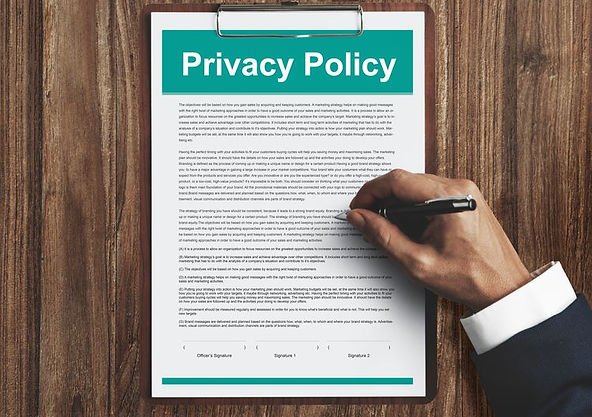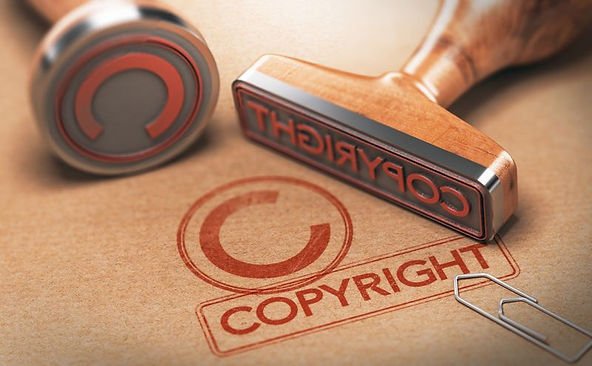E-commerce businesses have become increasingly popular as entrepreneurs capitalize on the growing number of consumers shopping online. Launching and operating a successful e-commerce venture requires careful planning and attention to legal considerations. By understanding and complying with applicable laws and regulations, you can minimize risks, protect your business, and create a positive experience for your customers.
Starting and running an e-commerce business involves numerous legal considerations to ensure compliance with applicable laws and regulations. This is by no means an exhaustive list, but it provides an overview of some key areas to be aware of:
10 Legal Considerations For Starting And Running An E-Commerce Business
-
Business structure: Choose the appropriate legal structure for your business (e.g., sole proprietorship, partnership, limited liability company, or corporation). This decision has implications for taxes, personal liability, and ongoing compliance requirements.
-
Licenses and permits: Obtain all necessary licenses and permits required for your e-commerce business. This may include general business licenses, sales tax permits, or industry-specific permits.
-
Domain registration and trademark: Register your domain name and consider trademarking your business name and logo to protect your brand identity. Ensure that your chosen name doesn’t infringe on any existing trademarks.
-
Privacy policy: Create a comprehensive privacy policy that outlines how your business collects, uses, stores, and shares customer data. Make sure to comply with applicable privacy regulations such as the General Data Protection Regulation (GDPR) for the European Union and the California Consumer Privacy Act (CCPA) for California residents.
-
Terms and conditions: Draft clear terms and conditions for your website, outlining the rights and responsibilities of your business and customers, including payment, shipping, returns, and dispute resolution.
-
Sales tax: Understand and comply with sales tax regulations in the jurisdictions where your business operates. This may involve registering for sales tax permits, collecting sales tax, and filing sales tax returns.
-
Intellectual property: Respect the intellectual property rights of others by ensuring that you have the necessary licenses and permissions to use any copyrighted materials, images, or software on your website.
-
Advertising and marketing: Familiarize yourself with the relevant advertising and marketing regulations, such as the CAN-SPAM Act for email marketing and the Federal Trade Commission (FTC) guidelines for endorsements and testimonials. Ensure your advertising and marketing materials are truthful and transparent, and do not make misleading or unsubstantiated claims.
-
E-commerce platform and payment processing: Choose a reliable e-commerce platform and payment processor that complies with industry standards and regulations, such as the Payment Card Industry Data Security Standard (PCI-DSS).
-
Product regulations and liability: Ensure the products you sell comply with applicable safety and quality regulations. Be aware of potential product liability issues and consider obtaining product liability insurance.
-
International considerations: If you plan to sell to customers outside your home country, be aware of the legal and regulatory requirements in those jurisdictions, including taxes, customs, and consumer protection laws.
-
Employment law: If you hire employees, comply with applicable employment laws, such as wage and hour regulations, discrimination and harassment laws, and workplace safety standards.
It’s important to consult with legal and tax professionals familiar with the specific requirements for e-commerce businesses in your jurisdiction. This will help you navigate the complex legal landscape and minimize potential risks and liabilities.
Business Structure

Choosing the right business structure is a critical decision for any entrepreneur, as it has significant implications for taxes, personal liability, and ongoing compliance requirements. Below is an in-depth overview of four common business structures:
Sole Proprietorship
A sole proprietorship is the simplest form of business structure. It’s owned and operated by a single individual, who is responsible for all aspects of the business.
Pros:
- Easy and inexpensive to set up.
- Complete control over the business.
- Minimal regulatory requirements.
Cons:
- Unlimited personal liability for business debts and liabilities.
- Limited access to capital and financing.
- Business income is taxed at the owner’s personal income tax rate, which may be higher than corporate tax rates.
Partnership
A partnership is a business structure where two or more individuals share ownership and management responsibilities. There are two main types of partnerships: general partnerships (GP) and limited partnerships (LP).
Pros:
- Easy to set up and relatively low cost.
- Shared management and decision-making.
- Business income is passed through to partners and taxed at their income tax rates.
Cons:
- General partners have unlimited personal liability for business debts and liabilities.
- Limited partners may have limited control over the business.
- Potential for conflicts among partners.
Limited Liability Company (LLC)
An LLC is a hybrid business structure that combines the limited liability protection of a corporation with the tax flexibility of a partnership.
Pros:
- Limited liability for owners, protecting their assets from business debts and liabilities.
- Flexible tax treatment: can be taxed as a sole proprietorship, partnership, or corporation, depending on the number of owners and their preferences.
- Flexible management structure.
Cons:
- More complex and expensive to set up and maintain than a sole proprietorship or partnership.
- Some states impose annual fees or franchise taxes on LLCs.
- May face additional regulations and reporting requirements, depending on the jurisdiction.
Corporation
A corporation is a separate legal entity from its owners (shareholders), providing them with limited liability protection. The two main types of corporations are C corporations and S corporations.
Pros:
- Limited liability for shareholders, protecting their assets from business debts and liabilities.
- Easier access to capital and financing, as corporations can issue stock.
- Potential for lower tax rates on retained earnings (C corporations) or pass-through taxation (S corporations).
Cons:
- Complex and expensive to set up and maintain.
- More stringent regulatory and reporting requirements.
- Double taxation for C corporations, as profits are taxed at the corporate level and again at the shareholder level when dividends are distributed.
When choosing a business structure, it’s essential to consider the specific needs, goals, and risks of your e-commerce venture. Consult with legal and tax professionals to help determine the most appropriate structure for your unique situation.
Licenses And Permits

Obtaining the necessary licenses and permits is a crucial step in setting up and operating your e-commerce business legally. While requirements vary depending on your location and the nature of your business, here are some general guidelines for the types of licenses and permits you may need:
General Business License
A general business license is often required for businesses operating within a city or county. This license grants you the legal authority to conduct business within that jurisdiction. Check with your local government to determine if a general business license is necessary for your e-commerce venture.
Sales Tax Permit
If your business sells tangible goods, you may be required to collect sales tax from customers. To do this, you’ll need to register for a sales tax permit, also known as a seller’s permit or sales tax license, in each state where you have a tax nexus. A tax nexus is typically established when your business has a physical presence or generates a certain amount of revenue in a state.
Home-Based Business Permit
If you plan to operate your e-commerce business from home, you may need a home-based business permit, depending on local zoning laws and regulations. This permit ensures that your business complies with zoning, noise, and other ordinances that apply to home-based businesses in your area.
Industry-Specific Permits And Licenses
Depending on the products or services you sell, you may need additional permits or licenses. For example, if you sell food products, you may need a food handler’s permit or a health department permit. If you sell alcohol or tobacco, you may need a special license to do so. Research the specific requirements for your industry and location to ensure compliance.
Import/Export Licenses
If your e-commerce business involves importing or exporting goods, you may need to obtain import/export licenses or permits. These may be required by your home country, the country from which you’re importing, or both. Familiarize yourself with customs regulations and requirements for the products you plan to import or export.
Domain Registration And Trademark

Domain Registration
Select a domain name that represents your brand and is easy for customers to remember. Once you’ve chosen a suitable domain name, follow these steps:
Check Availability
Use a domain registrar’s search tool to ensure your desired domain name is available. If it’s already taken, you may need to consider alternatives or variations.
Register The Domain
Once you’ve found an available domain name, register it with a reputable domain registrar. The registration process typically involves providing your contact information and paying an annual fee.
Renew Your Domain Registration
Keep track of your domain registration’s expiration date and renew it on time to avoid losing control of your domain. Most registrars offer automatic renewal options to help you maintain ownership of your domain.
Trademark Protection
Trademarking your business name and logo can protect your brand identity and prevent others from using confusingly similar marks. Here’s how to pursue trademark protection:
Conduct A Trademark Search
Before applying for a trademark, search the United States Patent and Trademark Office (USPTO) database or relevant trademark databases in your country to ensure that your desired name and logo don’t infringe on any existing trademarks. Consider hiring a trademark attorney to assist with the search and provide expert guidance.
File A Trademark Application
If your search results indicate that your desired name and logo are available, file a trademark application with the USPTO or the relevant trademark office in your country. The application process typically involves providing information about your business and the goods or services it offers, as well as submitting a clear representation of the mark you want to protect.
Respond To Office Actions
After submitting your application, you may receive office actions from the trademark office requesting additional information or clarifications. Respond promptly and accurately to these requests to keep your application moving forward.
Monitor And Enforce Your Trademark
Once your trademark is registered, monitor its use to ensure others are not infringing on your rights. Take appropriate legal action if you discover unauthorized use of your trademark.
Privacy Policy

Identify Applicable Privacy Laws
Research the privacy laws and regulations that apply to your e-commerce business based on your location, target market, and the type of data you collect. Key regulations to consider include the General Data Protection Regulation (GDPR) for the European Union, the California Consumer Privacy Act (CCPA) for California residents, and the Personal Information Protection and Electronic Documents Act (PIPEDA) for Canadian businesses.
Understand The Data You Collect
Assess the types of personal information your business collects from customers, such as names, email addresses, phone numbers, payment information, and browsing activity. Be aware of the various ways you collect this data, including through account registration, order placement, customer inquiries, and cookies.
Draft Your Privacy Policy
Include the following elements in your privacy policy to ensure compliance with applicable laws and transparency with customers:
-
- A clear and concise introduction, explaining the purpose of your privacy policy.
- A detailed explanation of the types of personal information you collect and the methods used for collection.
- A description of how you use, store, and secure customers’ personal information.
- Information about how and under what circumstances you share or disclose personal information with third parties (e.g., service providers, payment processors, or law enforcement).
- A summary of customers’ rights regarding their personal information, such as the right to access, correct, delete, or restrict the processing of their data.
- Instructions for customers to exercise their rights, including contact information for your data protection officer or privacy contact person.
- A description of your use of cookies and similar technologies, as well as information about how customers can control or opt out of these technologies.
- A section on how you handle the personal information of minors, if applicable.
- Information about any international data transfers, including the legal mechanisms used to ensure compliance with privacy laws.
- A revision date or version number, indicating when the privacy policy was last updated.
Implement Your Privacy Policy
Make your privacy policy easily accessible on your website, typically by including a link in the footer. Obtain explicit consent from customers before collecting and processing their personal information, as required by applicable privacy laws.
Review And Update Your Privacy Policy Regularly
Regularly review and update your privacy policy to ensure ongoing compliance with evolving privacy laws and regulations, as well as changes in your data collection and processing practices.
Terms And Conditions

Introduction And Acceptance
Provide a brief introduction explaining the purpose of the terms and conditions and state that by using your website or purchasing products, customers agree to be bound by these terms.
User Account And Eligibility
Outline the requirements for creating a user account, such as minimum age and accurate information provision. Explain your right to suspend or terminate accounts that violate your terms.
Product Information And Availability
Clarify that product descriptions, images, and prices are subject to change and may not always be accurate. State that product availability may be limited and orders are subject to acceptance and availability.
Payment Terms
Specify the accepted payment methods and the terms of payment, such as when payment is due and whether it includes taxes and shipping fees. Explain your right to cancel orders or suspend services if payment is not received.
Shipping And Delivery
Provide information about your shipping and delivery options, including estimated delivery times, shipping fees, and any potential delays or restrictions. Clarify that customers are responsible for providing accurate shipping information and may be held liable for additional costs resulting from incorrect addresses.
Returns, Refunds, And Exchanges
Clearly outline your return, refund, and exchange policies, including any applicable conditions, timeframes, and fees. Specify the process customers must follow to initiate a return or exchange.
Intellectual Property
State that your website content, including text, images, logos, and product designs, is protected by intellectual property laws and may not be used without your permission. Include a copyright notice and clarify that unauthorized use may result in legal action.
Limitation Of Liability
Include a clause that limits your liability for any damages or losses arising from the use of your website or products, to the extent permitted by law. Clearly state that your business is not responsible for any indirect, consequential, or incidental damages.
Dispute Resolution
Establish a process for resolving disputes between your business and customers, such as negotiation, mediation, or arbitration. Specify the governing law and jurisdiction for any legal disputes.
Privacy Policy
Include a reference to your privacy policy and state that customers’ use of your website is subject to the terms outlined in the policy.
Modifications To Terms And Conditions
Reserve the right to modify your terms and conditions at any time and clarify that customers are responsible for regularly reviewing the updated terms.
Miscellaneous Provisions
Add any additional clauses relevant to your specific business, such as force majeure, waiver, severability, or entire agreement.
Sales Tax
Complying with sales tax regulations is essential for any e-commerce business. The process involves understanding the rules in the jurisdictions where you operate, registering for sales tax permits, collecting the appropriate taxes, and filing returns. Here are some steps to help you manage sales tax compliance:
Determine Where You Have A Tax Nexus
A tax nexus is a connection between a business and a jurisdiction that requires the business to collect and remit sales tax. This may be established by having a physical presence (e.g., office, warehouse, or employees) or an economic presence (e.g., reaching a certain sales threshold) in a state or country. Research the tax nexus rules in the jurisdictions where you do business to determine your obligations.
Register For Sales Tax Permits
If you have a tax nexus in a jurisdiction, you’ll need to register for a sales tax permit with the appropriate tax authority. Registration typically involves providing your business details, such as your legal structure, owner information, and estimated sales revenue.
Set Up Sales Tax Collection
Once registered, set up your e-commerce platform to automatically collect sales tax from customers in the jurisdictions where you have a tax nexus. The tax rate may depend on the type of product or service you sell, as well as the customer’s location. Many e-commerce platforms offer built-in sales tax calculation tools, or you can use third-party tax software to ensure accurate tax collection.
Track Your Sales And Tax Collections
Maintain accurate records of your sales transactions and the sales tax collected. Use accounting software or other tools to help you stay organized and track your tax liabilities.
File And Remit Sales Tax Returns
Depending on the jurisdiction, you may need to file sales tax returns monthly, quarterly, or annually. Ensure that you file your returns on time and remit the collected sales tax to the appropriate tax authorities. Late filings or payments may result in penalties and interest.
Stay Informed About Changes To Sales Tax Laws
Sales tax regulations can change frequently. Keep up-to-date with any changes in the jurisdictions where you have a tax nexus, and adjust your sales tax collection and filing practices accordingly.
Seek Professional Advice
Sales tax compliance can be complex, especially for e-commerce businesses selling to customers in multiple jurisdictions. Consult with a tax professional or accountant experienced in sales tax compliance to help you navigate the rules and ensure your business stays compliant.
By understanding and complying with sales tax regulations, you can minimize the risk of penalties, protect your business, and maintain a positive reputation with customers and tax authorities.
Intellectual Property

Respecting the intellectual property rights of others is crucial for maintaining the integrity and legality of your e-commerce business. Infringing on someone else’s intellectual property can lead to legal disputes, fines, and damage to your business reputation. Here are some steps to ensure you have the necessary licenses and permissions to use copyrighted materials, images, or software on your website:
Use Original Content
Create your original content, including text, images, and graphics, to avoid potential copyright infringement. By using your content, you maintain control over intellectual property rights and can be confident that you are not violating someone else’s rights.
Obtain Licenses And Permissions
If you want to use copyrighted materials, images, or software that you did not create, ensure you obtain the necessary licenses or permissions from the copyright owner. This may involve paying a licensing fee or entering into a licensing agreement that outlines the terms of use.
Utilize Royalty-Free Resources
There are numerous royalty-free resources available, such as stock image websites and open-source software, that allow you to use their content without violating intellectual property rights. Always review the terms and conditions of these resources to ensure proper use and compliance.
Attribute The Source
In some cases, you may be allowed to use copyrighted materials if you provide proper attribution to the original creator or source. Be sure to follow the specific attribution guidelines provided by the copyright owner or outlined in the licensing agreement.
Monitor User-Generated Content
If your e-commerce website allows user-generated content, such as customer reviews or comments, ensure that you have a system in place to monitor and remove any content that potentially infringes on someone else’s intellectual property rights.
Implement A Takedown Policy
Develop and publish a clear takedown policy on your website that outlines the steps you will take if you receive a complaint about copyright infringement. This policy should include a designated contact person and the process for submitting a complaint.
Educate Your Team
Ensure that your employees and contractors are aware of the importance of respecting intellectual property rights and are trained on how to identify and avoid potential copyright infringements.
By taking these steps to respect the intellectual property rights of others, you can minimize the risk of legal disputes, protect your e-commerce business’s reputation, and maintain a strong foundation for growth and success.
Advertising And Marketing

Familiarizing yourself with advertising and marketing regulations is crucial to ensure your e-commerce business complies with legal requirements and maintains a positive reputation with customers. Here are some key steps to help you comply with advertising and marketing laws and guidelines:
Understand Relevant Regulations
Research the advertising and marketing laws that apply to your e-commerce business, such as the CAN-SPAM Act for email marketing in the United States, the Federal Trade Commission (FTC) guidelines for endorsements and testimonials, the EU’s General Data Protection Regulation (GDPR) for email marketing in the European Union, and other applicable local, state, or country-specific regulations.
Be Truthful And Transparent
Ensure that your marketing materials, including product descriptions, advertisements, and promotional offers, are truthful and transparent. Avoid making false or misleading claims about your products or services, as this can lead to legal disputes and damage your business reputation.
Provide Substantiation For Claims
If you make specific claims about your products or services, such as performance, safety, or health benefits, ensure that you have reliable evidence to support these claims. Be prepared to provide substantiation for any claims you make if challenged by a regulatory authority or a customer.
Comply With Email Marketing Laws
If your e-commerce business engages in email marketing, ensure you comply with the relevant laws, such as the CAN-SPAM Act or GDPR. This typically involves obtaining proper consent before sending marketing emails, providing a clear and easy method for recipients to unsubscribe, and including accurate sender information in your emails.
Follow Guidelines For Endorsements And Testimonials
When using endorsements or testimonials in your marketing materials, follow the FTC guidelines or other applicable regulations. This includes disclosing any material connections between the endorser and your business, ensuring endorsements are truthful and not misleading, and avoiding the use of unrepresentative testimonials that may give consumers unrealistic expectations.
Respect Intellectual Property Rights
Ensure that your marketing materials do not infringe on the intellectual property rights of others, such as using copyrighted images, text, or music without permission or proper attribution.
Monitor And Manage User-Generated Content
If your website allows user-generated content, such as product reviews or comments, monitor this content for potential advertising law violations. Develop a policy for addressing and removing content that may be false, misleading, or otherwise in violation of advertising regulations.
Train Your Team
Educate your employees and contractors about the importance of complying with advertising and marketing regulations and ensure they understand the specific requirements and guidelines that apply to your business.
By staying informed about advertising and marketing regulations and implementing compliant practices, you can protect your e-commerce business from legal disputes, maintain a positive reputation with customers, and promote long-term success.
E-Commerce Platform And Payment Processing

Selecting a reliable e-commerce platform and payment processor that adheres to industry standards and regulations is vital for the security and success of your online business. Here are some factors to consider when choosing an e-commerce platform and payment processor:
E-commerce Platform Features
Look for a platform that offers the features you need to run your online stores, such as inventory management, order processing, shipping integration, and support for multiple payment methods. Popular e-commerce platforms include Shopify, WooCommerce, BigCommerce, and Magento.
Scalability And Customization
Choose a platform that can grow with your business and allows for customization to suit your unique needs. Ensure that the platform supports additional features, integrations, or apps that you may require as your business expands.
Payment Processor Compatibility
Verify that your chosen e-commerce platform is compatible with a range of payment processors, giving you the flexibility to choose one that meets your specific requirements.
PCI-DSS Compliance
Ensure that both your e-commerce platform and payment processor comply with the Payment Card Industry Data Security Standard (PCI-DSS). This is a set of security standards designed to protect cardholder data and ensure secure online transactions. Compliance with PCI-DSS helps protect your business and customers from potential data breaches and fraud.
SSL Certificate
Look for an e-commerce platform that includes an SSL (Secure Socket Layer) certificate or allows you to obtain one. An SSL certificate encrypts data transmitted between your website and your customers, providing additional security for sensitive information, such as payment details and personal information.
Payment Options
Choose a payment processor that supports a variety of payment methods, such as credit cards, debit cards, digital wallets, and alternative payment options. Offering multiple payment options can improve the customer experience and lead to increased conversions.
Transaction Fees And Pricing
Evaluate the transaction fees and pricing structures of different payment processors to find one that aligns with your business’s budget and needs. Be aware that fees can vary based on factors such as transaction volume, average order value, and the type of payment method used.
Fraud Prevention And Risk Management
Select a payment processor that offers robust fraud prevention and risk management tools to help you detect and prevent fraudulent transactions. These tools can include address verification, card verification, and machine learning algorithms to identify and block suspicious activity.
Customer Support
Look for an e-commerce platform and payment processor that provide reliable customer support, including resources, documentation, and accessible support channels such as email, phone, or live chat.
By choosing a reliable e-commerce platform and payment processor that comply with industry standards and regulations, you can enhance the security and credibility of your online store, protect your customers’ sensitive data, and promote a seamless shopping experience.
Product Regulations And Liability

Complying with product regulations and addressing potential liability issues are critical aspects of running a successful e-commerce business. Here are some steps to help you ensure your products meet safety and quality standards and manage product liability risks:
Research Applicable Regulations
Familiarize yourself with the safety and quality regulations that apply to the products you sell, such as the Consumer Product Safety Act (CPSA) in the United States or the General Product Safety Directive (GPSD) in the European Union. These regulations may vary depending on the type of product, its intended use, and the jurisdiction in which it is sold.
Compliance With Industry Standards
Ensure your products meet any relevant industry standards, such as those established by the International Organization for Standardization (ISO) or the American National Standards Institute (ANSI). These standards can help demonstrate that your products are safe, reliable, and of high quality.
Product Testing And Certification
Depending on the product and jurisdiction, you may need to have your products tested and certified by an accredited third-party testing organization. This can help verify that your products meet the required safety and performance standards.
Proper Labeling And Documentation
Ensure your products are accurately labeled with the necessary information, such as safety warnings, instructions for use, and any required certifications or symbols. Provide clear and comprehensive documentation, including user manuals and safety guidelines, to help customers use your products safely and correctly.
Quality Control And Monitoring
Implement quality control procedures to ensure your products consistently meet safety and quality standards. Regularly monitor your products and suppliers to identify and address any potential issues or non-compliance.
Product Recalls And Corrective Actions
Establish a process for handling product recalls and corrective actions in case you discover a safety issue with one of your products. This may involve notifying customers, offering refunds or replacements, and working with regulatory authorities to address the issue.
Product Liability Insurance
Consider obtaining product liability insurance to protect your business from potential claims related to product-related injuries or damages. This insurance can cover legal fees, settlements, and judgments arising from product liability claims.
Terms And Conditions
Include clauses in your terms and conditions that address product liability, such as disclaimers of warranties, limitations of liability, and indemnification provisions. Consult with a legal professional to ensure your terms and conditions are compliant and adequately protect your business.
By taking these steps to ensure your products comply with safety and quality regulations and managing product liability risks, you can minimize the potential for legal disputes, protect your e-commerce business, and maintain a strong reputation with customers.
International Considerations

Selling to customers outside your home country can be a great opportunity for growth, but it also comes with additional legal and regulatory considerations. Here are some key aspects to consider when selling internationally:
Research Foreign Regulations
Familiarize yourself with the legal and regulatory requirements in the countries where you plan to sell, including consumer protection laws, product safety standards, and labeling requirements. These regulations may vary by country and could impact aspects of your business such as product selection, marketing, and returns policies.
Taxes And Customs Duties
Be aware of the taxes and customs duties that may apply to your products when selling internationally. This can include value-added tax (VAT), goods and services tax (GST), and import duties. Research the tax rates and registration requirements in your target markets and consider working with a tax professional to ensure compliance.
Shipping And Logistics
Determine the most efficient and cost-effective method for shipping your products to customers in other countries. Consider working with international shipping providers or fulfillment companies that have experience in handling cross-border logistics, customs clearance, and delivery.
Customs Documentation
Ensure that you provide accurate and complete customs documentation for your shipments, including detailed descriptions of your products, their value, and the country of origin. Incorrect or incomplete documentation can lead to delays, additional costs, and potential fines.
Currency Exchange And Payment Methods
Offer customers the option to pay in their local currency and provide multiple payment methods that are popular in their country. This can help increase conversion rates and improve the overall customer experience.
Intellectual Property Protection
Research the intellectual property laws in your target markets and take steps to protect your trademarks, patents, and copyrights in those countries. This may involve registering your intellectual property with the appropriate authorities or working with local legal professionals to ensure your rights are protected.
Language And Localization
Translate and localize your website, product descriptions, and customer support materials to cater to your international audience. This can help improve customer trust, increase conversions, and reduce potential misunderstandings or disputes.
Data Privacy And Security
Familiarize yourself with the data privacy and security regulations in the countries where you sell, such as the General Data Protection Regulation (GDPR) in the European Union. Ensure that your website and data processing practices comply with these regulations and inform customers about how their data will be collected, used, and stored.
Returns And Refunds
Develop a clear and fair returns and refunds policy for your international customers that takes into account the legal requirements and consumer protection laws in their countries. This may involve offering extended return periods, covering return shipping costs, or providing different options for refunds and exchanges.
By addressing these international considerations, you can successfully expand your e-commerce business to global markets, while remaining compliant with the various legal and regulatory requirements in each jurisdiction. This can help you minimize risks, enhance your reputation, and reach a wider customer base.
Employment Law

Complying with employment laws is essential for any e-commerce business that hires employees. Understanding and adhering to these laws can help protect your business from potential legal disputes, maintain a positive workplace environment, and promote long-term success. Here are some key aspects of employment law to consider:
Wage And Hour Regulations
Familiarize yourself with the wage and hour laws in your jurisdiction, including minimum wage requirements, overtime pay, meal and rest breaks, and recordkeeping requirements. Ensure you properly classify your workers as employees or independent contractors, as this can have significant implications for wage and hour compliance.
Anti-Discrimination And Harassment Laws
Comply with applicable anti-discrimination and harassment laws, such as Title VII of the Civil Rights Act in the United States or the Equality Act in the United Kingdom. These laws generally prohibit discrimination and harassment based on factors such as race, sex, religion, national origin, age, disability, or sexual orientation.
Workplace Safety Standards
Adhere to workplace safety standards, such as those established by the Occupational Safety and Health Administration (OSHA) in the United States or the Health and Safety Executive (HSE) in the United Kingdom. Ensure that your workplace is free of recognized hazards and that employees are provided with necessary safety equipment and training.
Employee Benefits And Leave
Understand and comply with laws related to employee benefits and leave, such as health insurance, retirement plans, and paid time off. This may include compliance with the Family and Medical Leave Act (FMLA) in the United States or the Working Time Regulations in the United Kingdom.
Worker’s Compensation
Obtain worker’s compensation insurance as required by your jurisdiction to provide financial support and medical coverage for employees who are injured or become ill due to work-related causes.
Privacy And Data Protection
Ensure that your employee data processing practices comply with applicable privacy and data protection laws, such as the General Data Protection Regulation (GDPR) in the European Union or the California Consumer Privacy Act (CCPA) in the United States.
Employment Contracts And Agreements
Develop clear and legally compliant employment contracts and agreements that outline the terms and conditions of employment, including compensation, job duties, and expectations for performance and conduct.
Employee Policies And Handbooks
Create comprehensive employee policies and handbooks that outline your company’s rules, procedures, and expectations. This can help ensure that employees understand their rights and responsibilities, as well as the consequences for violating company policies.
Training And Education
Provide regular training and education to your employees on topics such as workplace safety, anti-discrimination and harassment, and data privacy. This can help prevent potential issues and ensure that your workforce remains informed and compliant with relevant laws and regulations.
By understanding and complying with employment laws, you can create a safe, fair, and supportive work environment for your employees, reduce the risk of legal disputes, and promote the long-term success of your e-commerce business.
In conclusion, starting and running an e-commerce business involves navigating a complex legal landscape. By addressing key areas such as business structure, licenses and permits, privacy policies, terms and conditions, and international considerations, you can establish a solid legal foundation for your business. Consult with legal and tax professionals to ensure your e-commerce venture is compliant with all relevant regulations and requirements, ultimately fostering a successful and sustainable online business. Join our coaching program for more tips and strategies in e-commerce.


